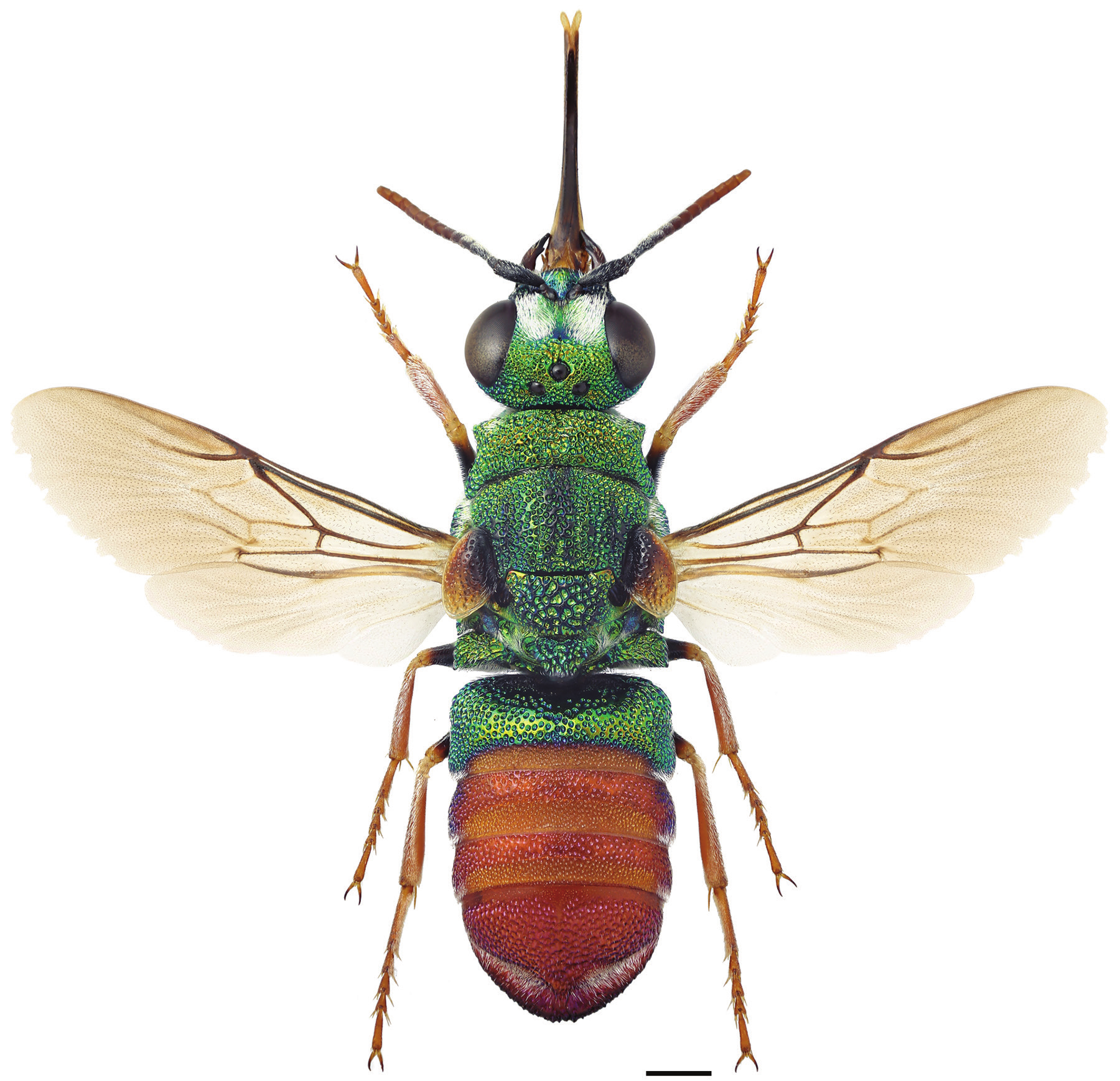Parnopes grandior
Figure 209
Parnopes grandior ♂. Scale 1 mm.
- Innhold
- Diagnosis
- Distribution
- Biology
Diagnosis
Length 8–12 mm.
The species is easy to differentiate from other North European cuckoo wasps by its unique structure and colouration. The head, mesosoma and most of T1 are green or green-blue, with golden or coppery reflections, especially in the female. The metasoma behind T1, tegulae and tibiae are usually non-metallic red (Fig. 209). Sometimes also T2, T3 (and T4) have a metallic sheen laterally or even dorsally. The female has three and the male four external tergites, and the posterior margin of the last tergite is irregularly dentate (Fig. 209). The mouthparts are longer than the rest of the head, and the tegulae are large covering the wing bases (Fig. 209).
Distribution
Lithuania. Very rare. The species has been recorded from five localities in southern Lithuania (Orlovskytė et al. 2010).
West Palearctic: from Europe and northern Africa to Yemen and southwestern Asia (Linsenmaier 1997, 1999).
Biology
Habitat: xerothermic sparsely vegetated sandy areas. Adults often visit flowers of several different families (Bischoff 1923, Trautmann 1927, Molitor 1935, Schneid 1954, Linsenmaier 1997, Rosa 2004).
Flight period: July to August.
Host: Bembix rostrata (Linnaeus) (Crabronidae) (Gauss 1967), in southern Europe also other species of Bembix Fabricius (Linsenmaier 1968, Kunz 1994). The larva does not consume the host larva until it is fully grown (Malyshev 1968).
